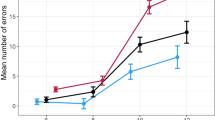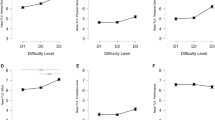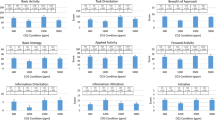Abstract
Background
Recent studies suggest that carbon dioxide has an impact on cognitive function performance of office workers at concentrations previously thought to be benign (1000–2500 ppm). The only available data for CO2 on the flight deck indicate that the average CO2 concentrations are typically <1000 ppm, but the 95th percentile concentration can be as high as 1400 ppm, depending on airplane type.
Methods
We recruited 30 active commercial airline pilots to fly three 3-h flight segments in an FAA-approved flight simulator with each segment at a different CO2 concentration on the flight deck (700, 1500, 2500 ppm). CO2 concentrations were modified by introducing ultra-pure CO2 into the simulator; ventilation rates remained the same for each segment. The pilots performed a range of predefined maneuvers of varying difficulty without the aid of autopilot, and were assessed by a FAA Designated Pilot Examiner according to FAA Practical Test Standards. Pilots and the Examiner were blinded to test conditions and the order of exposures was randomized.
Results
Compared to segments at a CO2 concentration of 2500 ppm, the odds of passing a maneuver as rated by the Examiner in the simulator were 1.52 (95% CI: 1.02–2.25) times higher when pilots were exposed to 1500 ppm and 1.69 (95% CI: 1.11–2.55) times higher when exposed to 700 ppm, controlling for maneuver difficulty, Examiner and order of maneuvers.
Discussion
Examiner rating captured a wider range of performance indicators than output from the flight simulator, which can characterize only a few quantitative aspects of the flight performance. More broadly, these findings suggest that there is a direct effect of carbon dioxide on performance, independent of ventilation, with implications for many other indoor environments that routinely experience CO2 concentrations above 1000 ppm.
This is a preview of subscription content, access via your institution
Access options
Subscribe to this journal
Receive 6 print issues and online access
$259.00 per year
only $43.17 per issue
Buy this article
- Purchase on Springer Link
- Instant access to full article PDF
Prices may be subject to local taxes which are calculated during checkout




Similar content being viewed by others
References
EASA. Annual Safety Review-2017; 2017. Available from: https://www.easa.europa.eu/document-library/general-publications/annual-safety-review-2017.
Hardy DJ, Parasuraman R. Cognition and flight performance in older pilots. J Exp Psychol Appl. 1997;3:313.
Wu AC, et al. Airplane pilot mental health and suicidal thoughts: a cross-sectional descriptive study via anonymous web-based survey. Environ Health. 2016;15:121.
Van Dongen HP, Caldwell JA, Caldwell JL. Investigating systematic individual differences in sleep-deprived performance on a high-fidelity flight simulator. Behav Res Methods. 2006;38:333–43.
Petrilli RM, et al. The sleep, subjective fatigue, and sustained attention of commercial airline pilots during an international pattern. Chronobiol Int. 2006;23:1357–62.
Bekö G, et al. Impact of cabin ozone concentrations on passenger reported symptoms in commercial aircraft. PLoS ONE. 2015;10:e0128454.
McNeely E, et al. The self-reported health of US flight attendants compared to the general population. Environ Health. 2014;13:13.
Allen JG, et al. Associations of cognitive function scores with carbon dioxide, ventilation, and volatile organic compound exposures in office workers: A controlled exposure study of green and conventional office environments. Environ Health Perspect. 2016;124:805–12.
Satish U, et al. Is CO2 an indoor pollutant? Direct effects of low-to-moderate CO2 concentrations on human decision-making performance. Environ Health Perspect. 2012;120:1671–7.
Petersen S, et al. The effect of increased classroom ventilation rate indicated by reduced CO2 concentration on the performance of schoolwork by children. Indoor Air. 2016;26:366–79.
ASHRAE. Standard 62.1-2013, Ventilation for acceptable indoor air quality. Atlanta, GA: American Society of Heating, Refrigerating and Air-Conditioning Engineers, Inc.; 2013.
Foucher PY, et al. Carbon dioxide atmospheric vertical profiles retrieved from space observation using ACE-FTS solar occultation instrument. Atmos Chem Phys. 2011;11:2455–70.
Sechzer P, et al. Effect of CO2 inhalation on arterial pressure, ECG and plasma catecholamines and 17-OH corticosteroids in normal man. J Appl Physiol (1985). 1960;15:454–8.
Woods SW, et al. Carbon dioxide—induced anxiety: behavioral, physiologic, and biochemical effects of carbon dioxide in patients with panic disorders and healthy subjects. Arch Gen Psychiatry. 1988;45:43–52.
Sliwka U, et al. Effects of sustained low-level elevations of carbon dioxide on cerebral blood flow and autoregulation of the intracerebral arteries in humans. Moffett Field, CA: NASA Technical Report NASA-CR-203033; 1996.
Schaefer K, et al. Respiratory acclimatization to carbon dioxide. J Appl Physiol (1985). 1963;18:1071–8.
OSHA. Carbon Dioxide. 2017; Available from: https://www.osha.gov/dts/chemicalsampling/data/CH_225400.html.
ACGIH. Documentation of the threshold limit values and biological exposure indices. Cincinnati, OH: American Conference of Governmental Industrial Hygienists, Inc.; 2011.
Kajtár L, Herczeg L. Influence of carbon-dioxide concentration on human well-being and intensity of mental work. Idojaras. 2012;116:145–69.
Kajtar L, et al. Influence of carbon-dioxide pollutant on human well-being and work intensity. Lisboa, Portugal: Proc Healthy Buildings Conference; 2006.
Zhang X, et al. Effects of exposure to carbon dioxide and bioeffluents on perceived air quality, self‐assessed acute health symptoms, and cognitive performance. Indoor Air. 2017;27:47–64.
FAR. Part 25-Airworthiness standards: Transport category airplanes. USA: Federal Aviation Administration (FAA); 2013.
Spengler JD, et al. In-flight/onboard monitoring: ACER’s component for ASHRAE 1262, Part 2. Boston, MA: Report No. RITE-ACER-CoE-2012-6 National Air Transportation Center of Excellence for Research in the Intermodal Transport Environment (RITE)–Airliner Cabin Environmental Research (ACER) Program; 2012.
NRC. The airliner cabin environment and the health of passengers and crew. Washington, DC: National Academies Press; 2002.
ASHRAE. Standard 161–2007, Air Quality within Commercial Aircraft. American Society of Heating, Refrigerating and Air-Conditioning Engineers, Inc: Atlanta; 2007.
Cao X et al. Study of the on-board carbon dioxide concentrations and ventilation performance in the passenger cabins of U.S. domestic flights. Accepted by Indoor and Built Environment; 2018 In Press.
Giaconia C, Orioli A, Gangi ADI. Air quality and relative humidity in commercial aircrafts: An experimental investigation on short-haul domestic flights. Build Environ. 2013;67:69–81.
EASA. CAQ Preliminary Cabin Air Quality Measurement Campaign. 2017; Available from: https://www.easa.europa.eu/system/files/dfu/EASA%20CAQ%20Study%20Final%20Report_21.03.2017.pdf.
WAI. Current statistics of women in aviation careers in U.S. 2013; Available from: https://www.wai.org/resources/waistats.
Zhang X, Wargocki P, Lian Z. Human responses to carbon dioxide, a follow-up study at recommended exposure limits in non-industrial environments. Build Environ. 2016;100:162–71.
Zhang X, Wargocki P, Lian Z. Physiological responses during exposure to carbon dioxide and bioeffluents at levels typically occurring indoors. Indoor Air. 2017;27:65–77.
Lee SC, et al. Indoor air quality investigation on commercial aircraft. Indoor Air. 1999;9:180–7.
MacNaughton P, et al. Environmental perceptions and health before and after relocation to a green building. Build Environ. 2016;104:138–44.
Vehviläinen T, et al. High indoor CO2 concentrations in an office environment increases the transcutaneous CO2 level and sleepiness during cognitive work. J Occup Environ Hyg. 2016;13:19–29.
Thom SR, et al. Increased carbon dioxide levels stimulate neutrophils to produce microparticles and activate the nucleotide-binding domain-like receptor 3 inflammasome. Free Radic Biol Med. 2017;106:406–16.
Boeing. Statistical summary of commercial jet airplane accidents—worldwide operations 1959–2016. 2016; Available from: https://787updates.newairplane.com/getmedia/23c2b337-2940-4783-aa75-9cb0a959a7a9/2016_Statistical_Summary_1959-2015
Law J, et al. Relationship between carbon dioxide levels and reported headaches on the international space station. J Occup Environ Med. 2014;56:477–83.
Luangprasert M, et al. In-vehicle carbon dioxide concentration in commuting cars in Bangkok, Thailand. J Air Waste Manag Assoc. 2017;67:623–33.
Corsi RL, et al. Carbon dioxide levels and dynamics in elementary schools: results of the Tesias study. Monterey, California: Proceedings of Indoor Air 2002; 2002.
Norbäck D, Nordström K, Zhao Z. Carbon dioxide (CO2) demand-controlled ventilation in university computer classrooms and possible effects on headache, fatigue and perceived indoor environment: an intervention study. Int Arch Occupat Environ Health. 2013; 86(2): 199–209.
Maddalena R, et al. Effects of ventilation rate per person and per floor area on perceived air quality, sick building syndrome symptoms, and decision-making. Indoor Air. 2015;25:362–70.
Acknowledgements
We thank the pilots for volunteering to participate in this study, AFG for support with the flight simulator, and the three FAA Designated Flight Examiners. We also acknowledge the reviewers for their thoughtful review of this manuscript. This research was supported by a gift from United Technologies to the Center for Climate, Health and the Global Environment (C-CHANGE) at the Harvard T.H. Chan School of Public Health. United Technologies provided feedback on the study design, but they were not involved in the data collection, data analysis, data interpretation, data presentation, or drafting of the manuscript. Dr. MacNaughton’s time was supported by NIEHS environmental epidemiology training grant 5T32ES007069-35.
Author information
Authors and Affiliations
Corresponding author
Ethics declarations
Conflict of interest
The authors declare that they have no conflict of interest.
Rights and permissions
About this article
Cite this article
Allen, J.G., MacNaughton, P., Cedeno-Laurent, J.G. et al. Airplane pilot flight performance on 21 maneuvers in a flight simulator under varying carbon dioxide concentrations. J Expo Sci Environ Epidemiol 29, 457–468 (2019). https://doi.org/10.1038/s41370-018-0055-8
Received:
Revised:
Accepted:
Published:
Issue Date:
DOI: https://doi.org/10.1038/s41370-018-0055-8
Keywords
This article is cited by
-
Evaluation of cabin air quality in terms of CO2 and temperature for different commercial aircrafts
International Journal of Environmental Science and Technology (2024)
-
In-depth investigation of air quality and CO2 lock-up phenomenon in pilots’ local environment
Experimental and Computational Multiphase Flow (2024)
-
Carbon dioxide increases with face masks but remains below short-term NIOSH limits
BMC Infectious Diseases (2021)
-
Flight Simulation Training Devices: Application, Classification, and Research
International Journal of Aeronautical and Space Sciences (2021)
-
Personal CO2 cloud: laboratory measurements of metabolic CO2 inhalation zone concentration and dispersion in a typical office desk setting
Journal of Exposure Science & Environmental Epidemiology (2020)



